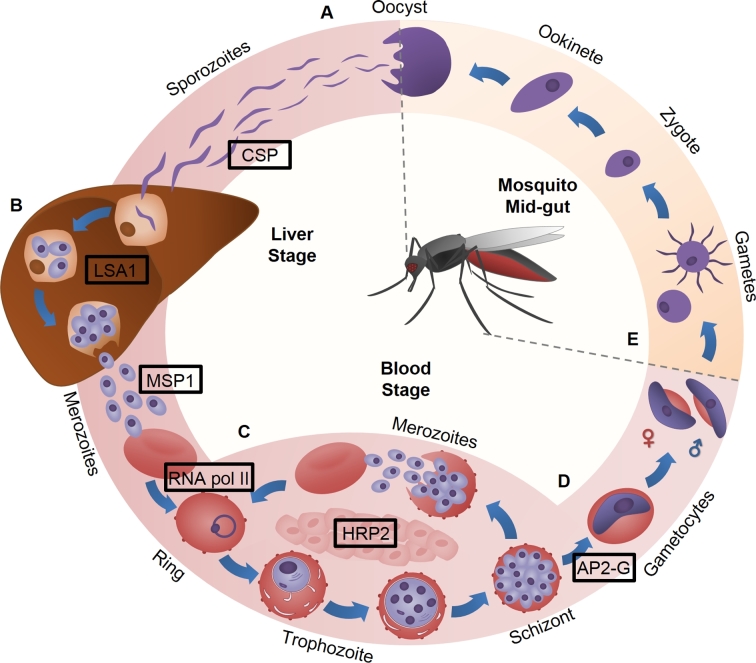Figure 2.
The P. falciparum life cycle. (A) Sporozoites are injected from the salivary glands of the Anopheles mosquito and migrate to the host liver. (B) Upon invasion of hepatocytes, thousands of merozoites are produced and subsequently released into the bloodstream. (C) Merozoites invade host erythrocytes and cycle through the ring, trophozoite and schizont stages before daughter merozoites egress from the host erythrocyte and invade new cells. (D) A small proportion of parasites differentiate into male and female gametocytes. (E) Gametocytes are ingested into the mosquito's midgut as it takes a blood meal where they form gametes and fuse to form a diploid zygote. The zygote differentiates into an ookinete which develops into an oocyst within the midgut wall. Upon oocyst rupture, sporozoites are released into the hemolymph and travel to the mosquito salivary gland. Proteins containing repetitive/low-complexity sequences are labelled at the approximate life stage where they are utilised.

